The Huntington’s blog takes you behind the scenes for a scholarly view of the collections.
Oh, What a Year It Was!
Posted on Tue., Dec. 29, 2015 by
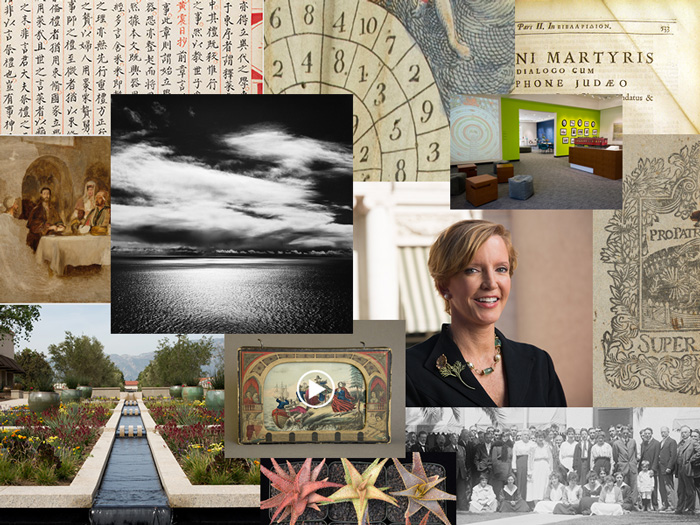
A collage of Verso highlights from 2015.
With 2016 right around the corner, we cast an eye back over a year marked by discovery and transformative change. Here are some of the remarkable stories we featured here on Verso. Early in the year, we reported on an amazing find—the discovery in our collections of a single handwritten volume from the massive Yongle Encyclopedia (1408), a compendium of Chinese writings from ancient times through the early Ming dynasty. When it was created, it was the largest book ever produced in China—or anywhere else—consisting of more than 11,000 volumes. Read “Organizing an Encyclopedia, Chinese Style.”
Another tantalizing story involved a research fellow who had a hunch about the original owner of a book in The Huntington’s collection, Joseph Mede’s Works (1672). Noticing that many of the pages were dog-eared and remembering a famous scientist’s penchant for using that technique to mark his place, the fellow dug further and confirmed the book was originally owned by English physicist Sir Isaac Newton. Read “Newton’s Lost Copy of Mede, Revealed.”
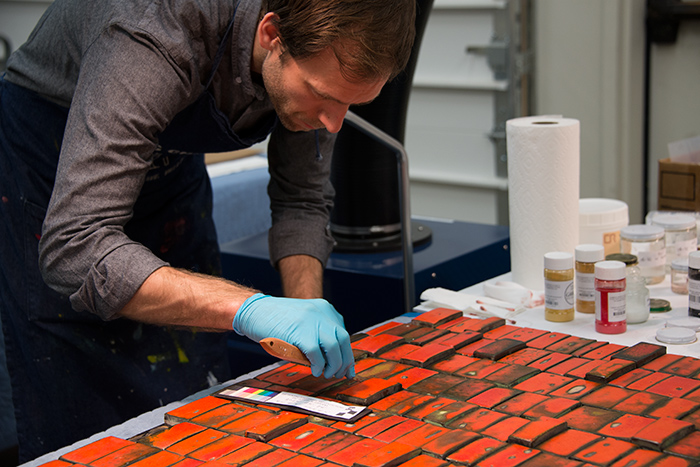
Sculptor and freelance conservator Morgan MacLean spent four months at The Huntington—documenting, treating, and installing the Doyle Lane mural in the Steven S. Koblik Education and Visitor Center. To learn more, read "Restoring a Doyle Lane Mural." Photo by Kate Lain.
Turning to botanical wonders, we showcased the astonishingly colorful and toothy aloe hybrids bred by Karen Zimmerman, The Huntington’s propagator of succulent plants, who likens creating the hybrids to making living sculptures. Read “Fantasy Aloe Hybrids.”
The opening of the Steven S. Koblik Education and Visitor Center in the spring prompted a slew of Verso posts, including one about our water-wise California garden and another about the new Mapel Orientation Gallery, where visitors can learn about The Huntington and its founder Henry E. Huntington. Read “A California Garden” and “Let’s Get Oriented.”
We also celebrated some stunning acquisitions, including photographs by Ansel Adams and William Current, a long-lost painting by the 19th-century Scottish artist David Wilkie, and a monumental mural by the 20th-century Los Angeles ceramist Doyle Lane. Read “Ansel Adams, William Current, and the American West,” “New Home for a Hidden Treasure,” and “Restoring a Doyle Lane Mural.”
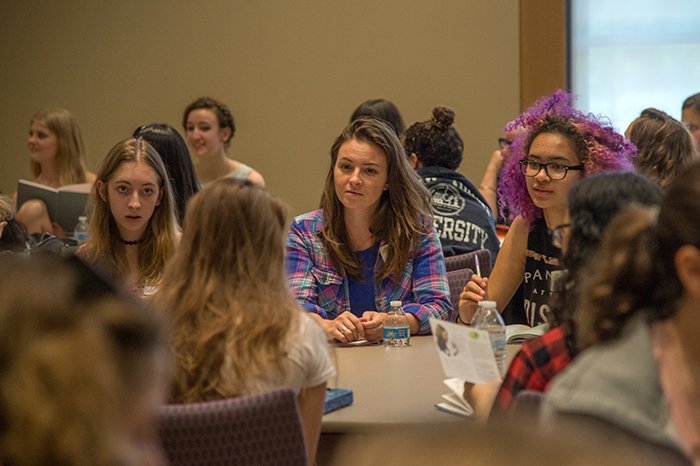
WriteGirl workshop participants listened to the story of Octavia Butler’s life, including her rise from humble beginnings to become a successful science-fiction writer and recipient of the MacArthur “Genius Grant.” For more on this story, read “Writing Herself In.” Photo by Martha Benedict.
In the summer, we recognized a major change in leadership, bidding a fond farewell to Steve Koblik, The Huntington’s president for nearly 14 years, and then welcoming Laura Skandera Trombley, our first woman president. Read “Together, We Did This” and “Welcoming a New President.”
We also shared the story of WriteGirl, a Los Angeles-based creative writing and mentoring organization for teenage girls. These girls and their mentors attended a one-day creative writing workshop at The Huntington based on materials from the collection of science-fiction writer Octavia Butler, whose papers reside here. Read “Writing Herself In.”
In late summer, we published our most popular post of the year, a story describing how 21st-century technology is making it possible for literary fans to pore over Chaucer’s The Canterbury Tales while lounging at home in their pajamas. Read “Medieval Manuscripts in the Digital Age.”
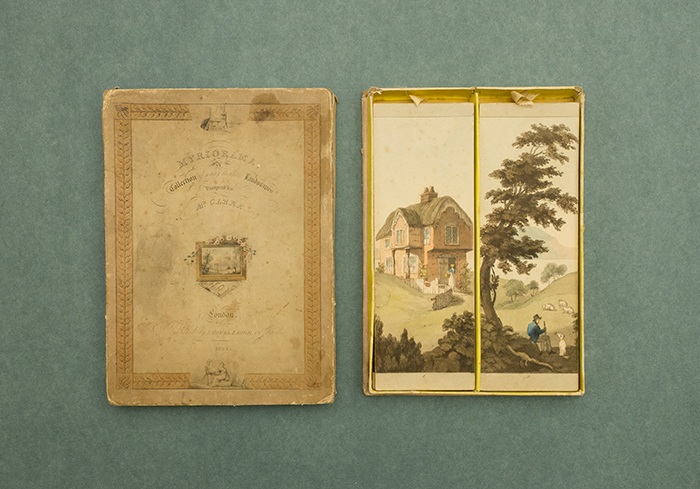
This myriorama, designed by John Heaviside Clark, was published by Samuel Leigh in 1824. To watch a video showing this myriorama in action, go to "LOOK>> A Myriorama." Photo by Kate Lain.
And we launched a new series called LOOK>>, in which we explored single objects from our wide-ranging collections in short videos. Check out “LOOK>> A Myriorama,” “LOOK>> A Historiscope,” “LOOK>> An Ant Plant,” and “LOOK>> A Printed Fan.”
Speaking of moving images, we also shared the storyboards used to make a 10-minute film about the history of The Huntington, designed and directed by Los Angeles-based filmmaker and animator Cosmo Segurson. Read “Animated History.”
With the arrival of fall and new research fellows at The Huntington, we provided several first-person accounts of explorations in our collections, including posts on unique manuscripts by an 18th-century English stone carver and a 19th-century American politician. Read “Stone Carver’s Diary from the Spa City of Bath” and “Reading the Aftermath of the Civil War.”
For sports fans, we kicked off the football season with a look at the history of the Los Angeles Memorial Coliseum, written by one of last year’s long-term research fellows. Read “Coliseum Politics.”
We also dug out a trove of correspondence to tell the curious tale of women employed at the Mount Wilson Observatory as human computers—conducting scientific computations early in the 20th century, long before the word “computer” generally referred to a machine. Read “Women Computing the Stars.”
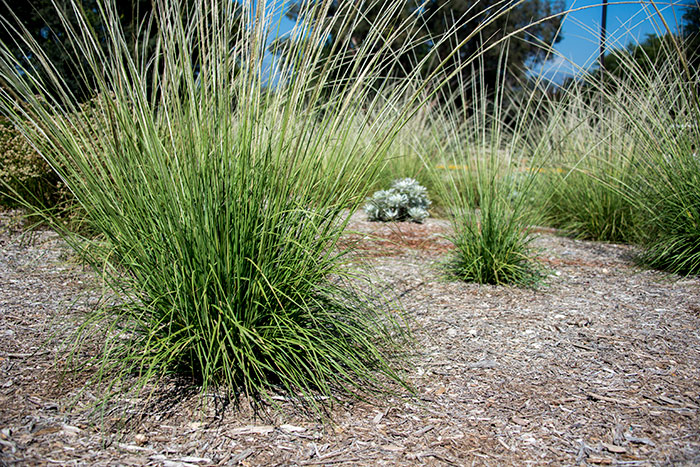
Deergrass is easy to grow, drought-tolerant, and large. To learn more about this and other plants that require little water, read “If Not Lawn, Then What?" Photo by Kate Lain.
And, in response to the continuing drought in California, we shared our picks for lawn alternatives. These plants are tried and true, and being used in our Frances and Sidney Brody California Garden. Read “If Not Lawn, Then What?”
Will learning something new be on your list of New Year’s resolutions? Why not listen to some of our superb lectures and conferences, captured as audio recordings and available for free to download. Our audio roundup details some of the highlights from the year, and it’s a great place to start. Read “Hear Ye, Hear Ye.”
Thank you for reading Verso. We look forward to sharing more fascinating stories with you in 2016.
Kevin Durkin is editor of Verso and managing editor in the office of communications and marketing at The Huntington.